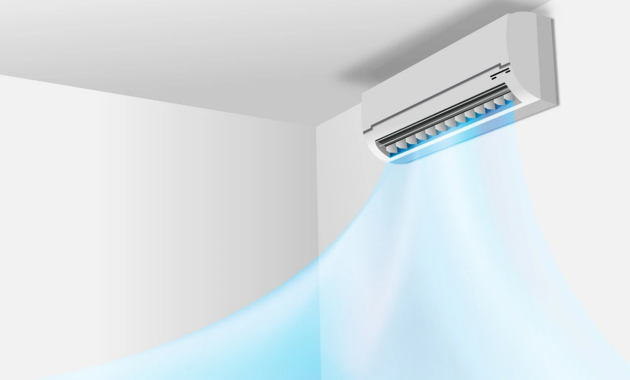A home’s air conditioner is an essential component, providing much-needed respite from the summer heat. As popular as stand-alone air conditioners are, many householders choose to integrate their air conditioning system with their existing furnace for optimal cooling efficacy.
This integration allows for enhanced energy efficiency and centralized control. This article will guide you through the process of wiring your air conditioner to your furnace, ensuring that your home achieves optimal conditioning.
For trusted Heating & AC Services in Peoria, AZ, you may want to check out Autumn Air.
1. Understanding the basics
Let’s go through the basics first.
1.1: Know your furnace
Before beginning the wiring procedure, it is essential to familiarize yourself with the furnace’s various components. Locate the furnace control board, which serves as the connection gateway for your air conditioning system. On the control board, there are terminals and a wiring diagram. This information will be indispensable for the wiring procedure.
1.2: Determine the correct wiring
You will need specific wiring, such as a thermostat cable or low-voltage cable, to connect your air conditioner to your furnace. Ensure that the wiring is compatible with both the air conditioner and the furnace. The wiring should be able to effectively transmit control signals between the two modules.
2. Wiring the Air Conditioner
Let us understand how to wire the air conditioner.
2.1: Locate the control board of the air conditioner
Start by locating the air conditioning system’s control panel. This board is typically located within the outdoor component of an air conditioner. Remove the access panel to reveal the circuit board. Once located, scrutinize the control board’s terminals and wiring diagram.
2.2: Connect the wiring
Using the appropriate low-voltage cable, connect the control board of the air conditioner to the control board of the furnace. Match the terminals on both control boards according to the wiring diagram for the air conditioner and furnace. Typically, you will connect the “Y” terminal on the control board of the air conditioner to the “Y” terminal on the control board of the furnace.
2.3: Install the suitable circuit breakers
Install the correct circuit breakers in the main electrical panel to ensure safety and prevent electrical problems. According to the manufacturer’s specifications, these breakers should be sized for both the air conditioning and heating systems. This action will safeguard your wiring and equipment against potential overloads.
3. Wire the thermostat
Next, we need to wire the thermostat.
3.1: Choose a compatible thermostat
Selecting the proper thermostat is essential for optimal climate control and seamless integration. Ensure that the thermostat you select is compatible with your air conditioning and heating systems. Depending on your specific requirements, look for features such as programmable settings, Wi-Fi connectivity, and temperature-zoning options.
3.2: Turn off the electricity
Turn off the power to the furnace and air conditioner before wiring the thermostat. This measure is necessary to prevent electrical shocks and potential equipment damage.
3.3: Connect the wiring to the thermostat
Using the wiring diagram included with your thermostat, connect the low-voltage wires from the air conditioning and heating systems to the thermostat’s terminals. Typically, the “Y” wire is connected to the refrigeration terminal, the “R” wire is connected to the power terminal, the “G” wire is connected to the fan terminal, and the “C” wire is connected to the common terminal. Ensure the safety of the connections.
4. Testing and troubleshooting
Here are some ways to test and troubleshoot the system.
4.1: Restore power and perform a system test
Once the wiring is completed, restore power to the heating and cooling systems. Test the system by setting the thermostat to the desired temperature and the cooling mode. Listen for the compressor to engage, which indicates that the chilling procedure has begun. Ensure that the air conditioning and heating systems are operating efficiently.
4.2 Troubleshooting Common Issues
During the process of connecting your air conditioner to your furnace, you may encounter a number of issues that can compromise cooling performance. Here are a few troubleshooting suggestions:
4.2.1: No power or inconsistent cooling
If your air conditioner is not receiving power or the chilling is inconsistent, examine the primary electrical panel’s circuit breakers. Ensure they are appropriately proportioned and cannot be stumbled over. Reset any tripped breakers and observe the system to determine whether the problem has been resolved.
4.2.2: Incorrect Thermostat Settings
Check the thermostat settings to ensure that the cooling mode is properly configured. Check that the thermostat is set to “cool” or “auto” mode and that the temperature settings are appropriate. Moreover, ensure that the ventilation settings are properly adjusted.
4.2.3: Poor Wiring Connections
Check the connections between the air conditioner, furnace, and thermostat wiring. Loose or improper connections can disrupt the signal flow and degrade the performance of the system. Examine each connection carefully and secure any loose cables. Refer to the supplied wiring diagrams for guidance.
4.2.4: Insufficient Cooling Capacity
If your air conditioner fails to effectively chill the house, it may be too small for the space. Consult a professional HVAC technician to assess your cooling requirements and recommend a system with the ideal cooling capacity.
4.2.5: Professional Assistance
If you encounter persistent problems or are apprehensive about the wiring process, you should seek professional help. HVAC technicians are capable of diagnosing and resolving complex electrical and conditioning issues due to their knowledge and expertise. They can ensure that your air conditioning and heating systems are optimally integrated and functioning.
Conclusion
The advantages of wiring your air conditioner to your furnace include centralized control and increased energy efficiency. By adhering to the steps indicated in this guide, you will be able to effectively integrate your air conditioning system with your furnace for optimal home ventilation.
Remember to know the basics of your furnace, choose compatible wiring, and correctly wire the air conditioner and thermostat. In addition, follow safety precautions and consult a professional if necessary. Enjoy the benefits of a well-integrated conditioning system that maintains the comfort of your home during the scorching months of the year.




















